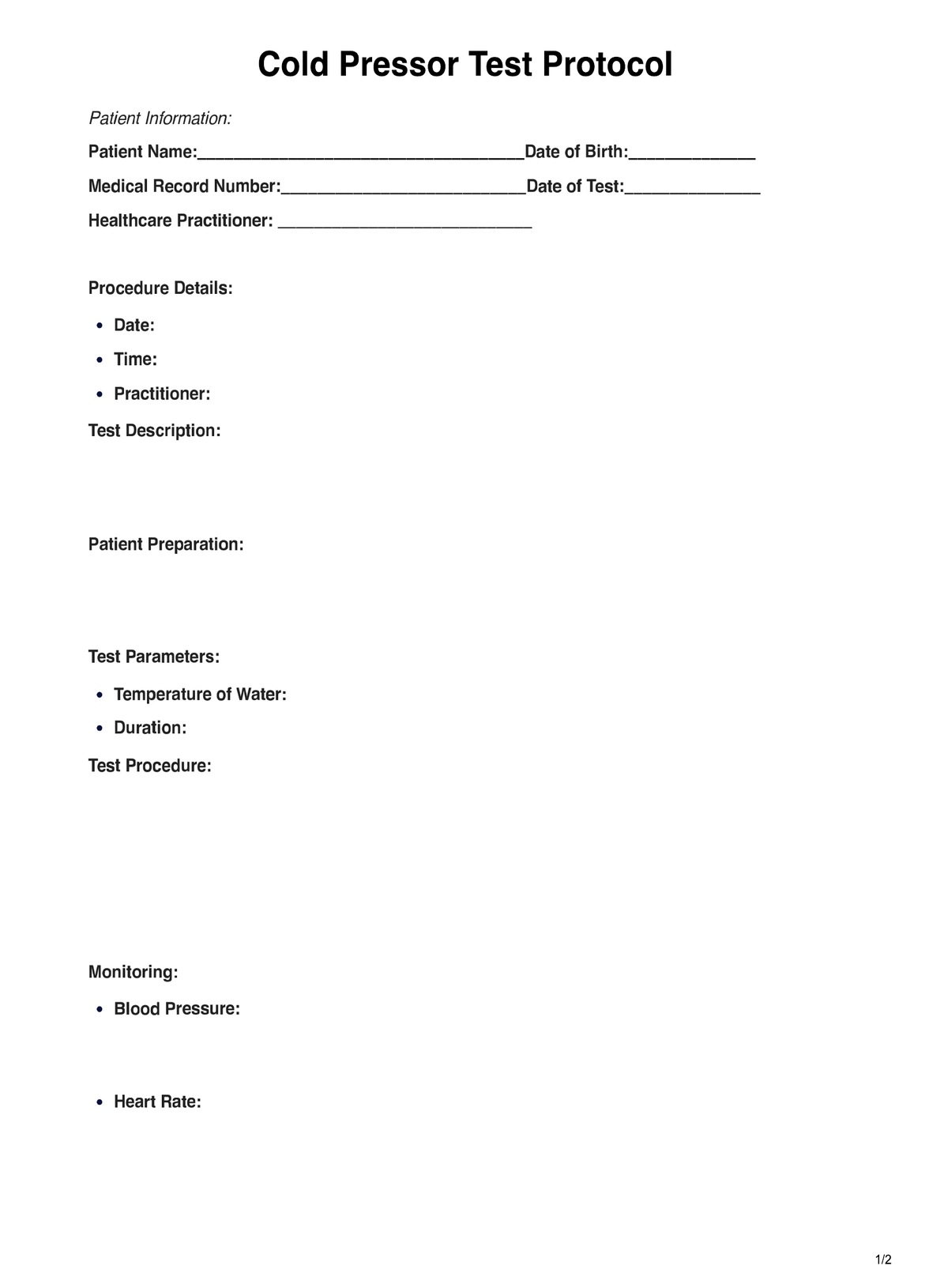The CPT is conducted for various purposes, including pain research, pain management evaluation, cardiovascular assessment, and studying the body's response to stress.

Cold Pressor
Learn about the Cold Pressor Test, a healthcare procedure to assess pain tolerance and cardiovascular responses. Explore its significance today.
Use Template
Cold Pressor Template
Commonly asked questions
A container filled with ice-cold water is prepared, and the patient is instructed to immerse a body part in the cold water up to a certain point. A timer is started, and the patient's pain tolerance and cardiovascular responses are monitored.
Common parameters include water temperature (usually 0°C), test duration (typically 1-5 minutes), and monitoring of blood pressure, heart rate, and symptoms.
EHR and practice management software
Get started for free
*No credit card required
Free
$0/usd
Unlimited clients
Telehealth
1GB of storage
Client portal text
Automated billing and online payments











